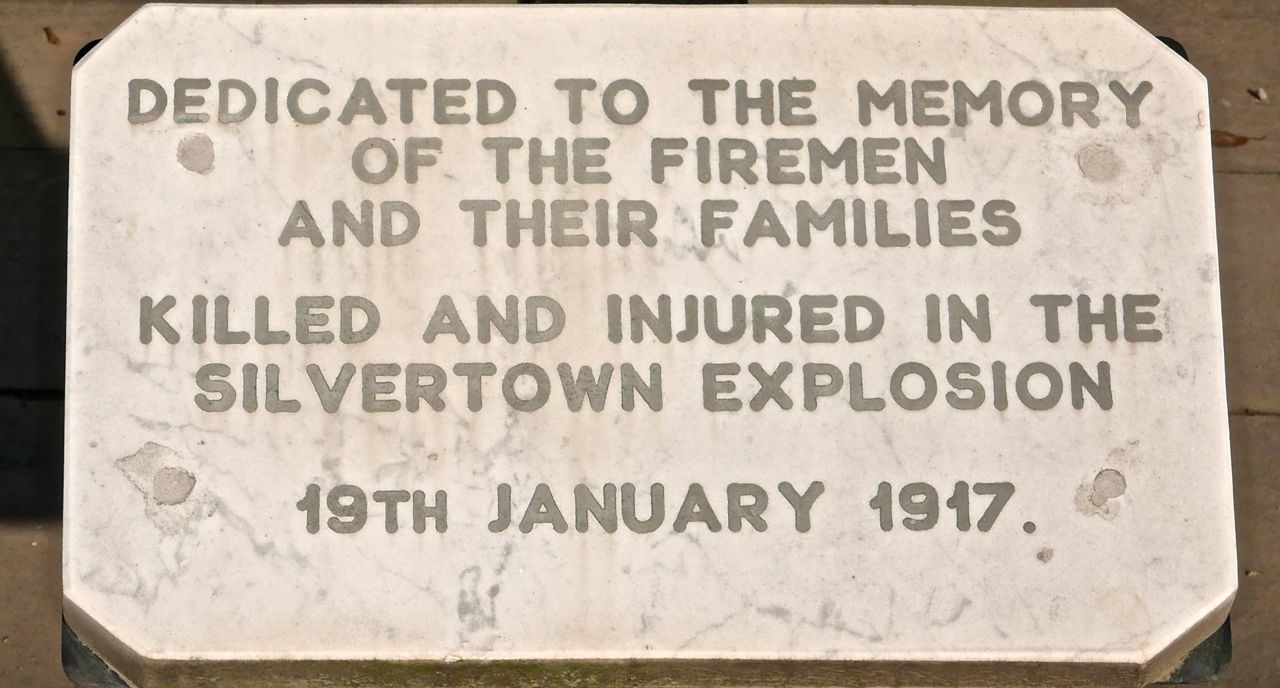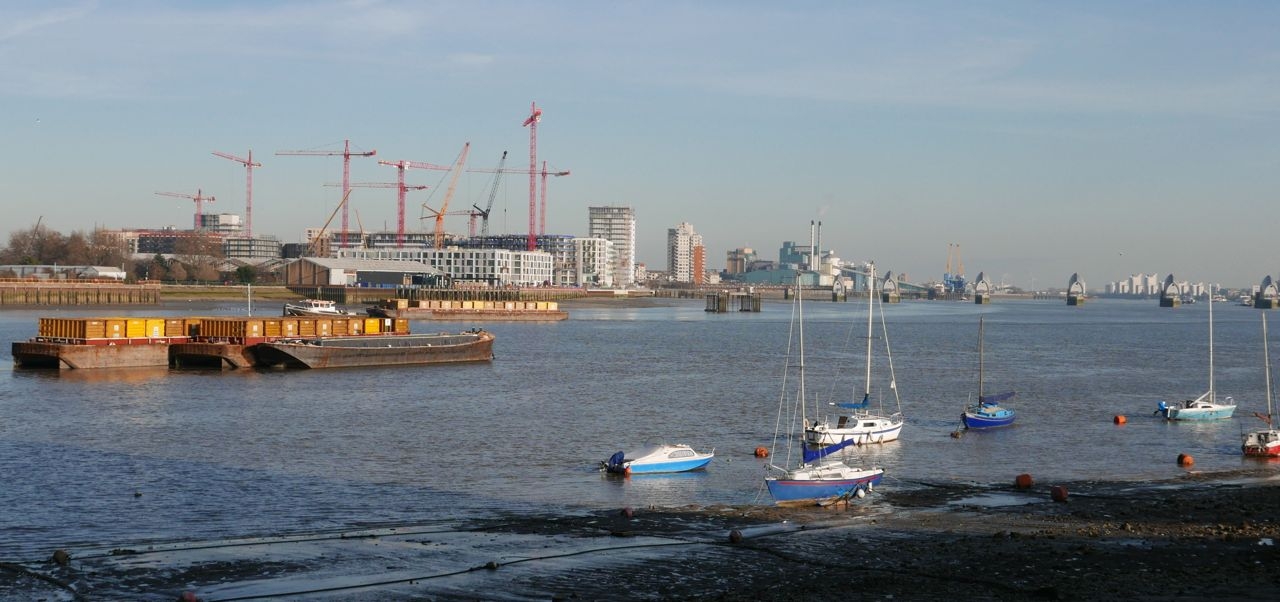More than 70 people were killed, and hundreds more were injured, in a blast at a munitions factory in London on 19 January 1917.
Fifty tonnes of TNT detonated after a fire broke out at the site in Silvertown, in the heart of the city’s docks.
The blast, reported to have been heard up to 100 miles (160 kms) away, damaged tens of thousands of homes.
An official report into the disaster was not made public until the 1950’s.

Firefighters’ memorial outside the former fire station in Silvertown (Photo: Centenary News)
Faced with a crisis over shell shortages early in the First World War, the British Government decided to use the former chemical works for purifying TNT.
Production went ahead in September 1915 despite warnings about the risks of locating such a hazardous process in a densely populated area of east London.
The catastrophic blast of 100 years ago killed 73 people, seriously injured more than 400 others, and damaged 70,000 properties.
Among many incidents, a gas holder across the River Thames at Greenwich blew up in a massive fireball.
 The Silvertown munitions factory site, now part of London docklands redevelopment, viewed from the Thames a century after the disaster (Photo: Centenary News)
The Silvertown munitions factory site, now part of London docklands redevelopment, viewed from the Thames a century after the disaster (Photo: Centenary News)
Accidental munitions blasts were not uncommon during the Great War.
*In December 1917, much of the Canadian port of Halifax was wrecked when a ship carrying explosives blew up after a collision – 2,000 people died.
*More than 100 workers were killed at a factory in Faversham, Kent, in April 1916.
*35 women working at the Barnbow Filling Factory in Leeds died following an explosion in December 1916.
*A blast at the Chilwell munitions factory in Nottinghamshire claimed 134 lives in July 1918.
To commemorate the centenary of the Silvertown explosion, the Museum of London Docklands has released online a collection of newly-digitised images revealing the scale of the damage.
Source: Wikipedia, London Fire Brigade
Images: Centenary News
Posted by: CN Editorial Team